walking in Museu Coleção Berardo
art metamorphosis
"No possible set of notes can explain our paintings," he once said. "Their explanation must come out of a consummated experience between picture and onlooker. The appreciation of art is a true marriage of minds. And in art as in marriage, lack of consummation is grounds for annulment."
Adolph Gottlieb
Adolph Gottlieb

Joseph Kosuth, Secret Painting, 1967
My aim is not to compete with what exists out there but to offer a personal investigation on the topic. I still have no definite answer and there is much more to read and see.
The inspiration for this article came a few years ago when I was faced with the question what is art. I remember looking at 'Ceci n'est pas une pipe' (also known as 'The Treachery of Images', 1928) by René Magritte, I was trying to grasp its meaning. I thought that art should be giving an aesthetic pleasure to the viewer (still do). Instead, this piece was offering a philosophical idea, something beyond what was being seen.
The inspiration for this article came a few years ago when I was faced with the question what is art. I remember looking at 'Ceci n'est pas une pipe' (also known as 'The Treachery of Images', 1928) by René Magritte, I was trying to grasp its meaning. I thought that art should be giving an aesthetic pleasure to the viewer (still do). Instead, this piece was offering a philosophical idea, something beyond what was being seen.
This led me to the immersion in old disputes of art, beauty & aesthetics, to movements from the last century. How did 'art' become what is today. Art's etymology derives from the latin word 'artem', nominative 'ars' meaning art, skill or craft. It is incorrect to say it comes from words like artificial. The first use of the word dates back to 13th-century manuscripts, 'skill as a result of learning or practice'. Through the ages its meaning was enriched. However its first versions (arte, eart) have probably existed since the founding of Rome.
Up until now I've had the pleasure to visit famous museums like The Louvre and Musée d'Orsay in Paris, Reina Sofia and El Prado in Madrid, Stedelijk Museum of Contemporary art and Van Gogh's Museum in Amsterdam, all of which have enriched my culture and experience. Back in November I went to the Museu Coleção Berardo in Lisbon. The timing was perfect because I had just finished an art infographic dedicated to last century's art pieces and still had a vivid image of the timeline in my mind.

read about the infographic here
This project absolutely broadened my notion of 'art', and it prepared me to see with new pair of eyes. I have always admired the Cubism, the Surrealism, however with some other modernist + post-modernists movements I was lost.

Museu Berardo is the biggest contemporary art museum in Portugal and offers the most significant artistic movements from the 20th century to the present day. The exhibition begins with a walk through modern art, starting with the the invention of Cubism, the work of Pablo Picasso, Dadaism and Marcel Duchamp's ready-made movement.

Marcel Duchamp, Le Porte-bouteilles, 1914
Those were followed by the vanguards, which introduced new concepts of space like Constructivism, Neo-Plasticism, Surrealism, Abstraction-Creation. Movements like Informalism, Abstract Expressionism, the New School of Paris, Kinetic Art, group Zero, and Spatialism, all emerged after World war II.

Salvador Dalí, The Lobster Telephone, 1936
Nouveau Réalisme, New Figuration, Pop Art and Neo-Dadaism, allowed a new perspective on Duchamp's work where the meaning had become unique + not calculated.

Andy Warhol, Judy Garland, 1979
The base floor was dedicated to contemporary art with work dating from the 1960s. Starting with the first Minimalist experiments based on ideas for simplicity, neutrality. These works require interaction from the observer who becomes part of the work. This tendency to explore, transform and embody an artwork is present in the Post-minimalist and Conceptual practices.

Joseph Kosuth, Self-Described and Self-Defined, 1965
Beginning in the 1960s "The idea becomes a machine that makes the art", this is what Sol LeWitt wrote in his article in "Paragraphs on Conceptual Art". Object + images are no longer the main focus. It is the idea, the concept and the intention that are appreciated. Many artists were inspired by the Dada Principles that negated the object of art and Marcel Duchamp's manifesto on ready-mades.
The point is to make and reflect simultaneously, not just contemplate. Other mediums are introduced like photography, video, television, etc.
The point is to make and reflect simultaneously, not just contemplate. Other mediums are introduced like photography, video, television, etc.

Joseph Kosuth, One and Three Plants, 1965
I was very impressed with the works of Joseph Kosuth, who played with the semiotic expressions and investigated the language and its utility in art. Like other conceptual artists, he took the art from the physical world and brought it to the world of ideas. The work 'One and three plants' is similar to his influential and more famous 'One and three chairs', which is in MoMA, NY. Those works consist of the real object, a photograph of the same object and dictionary definition.

Art & Language, Painting-Sculpture, 1968
I don't agree that anything you see in a museum is 'art'. It should resonate with something inside of you. A conclusion is that 'art' should be enriching your inner world, not just being consumed. Art should raise questions, bring discussions, cultivate morals, beauty, aesthetics. Now more than ever.
read about my friend Boris' review of the museum here
read next
photos made by during the visit
https://www.etymonline.com/word/art ; https://en.museuberardo.pt ; https://www.thoughtco.com/what-is-the-definition-of-art-182707 ; https://www.moma.org/learn/moma_learning/themes/conceptual-art/language-and-art/; https://www.tate.org.uk/art/art-terms/c/conceptual-art

